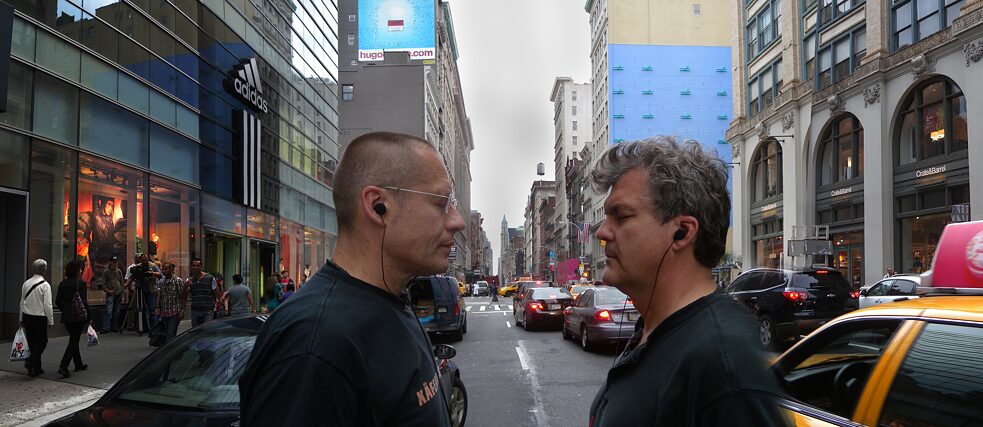Experimental Music
Learning from Sound and Space

This series invites you to open your ears and join a fascinating selection of sound artists on deep-listening journeys into the realm of sound and space that may just change your take on the world.
By Annette Klein
In the 15 years that the Goethe-Institut Boston has been presenting experimental music from Germany in collaboration with partner Non-Event, a huge variety of approaches to sound have resonated through our venues. An engaged and growing audience has held fast over the years. Yes, there has been some “holding of ears”; that’s part of it! But the traditional post-event exchanges consistently reveal that the events spark new discovery and get the brain cells firing. This has affirmed our conviction that the series is an important addition to the growing experimental music scene and the arts in general in the Greater Boston Area.
One important thread running through the series, which includes everything from performances to installations and soundwalks to workshops, is experiment with sound and space. This can take the form of anything from exploring the city via a soundwalk to spatialization experiments with elaborate speaker setup. Positioning sound with a spatial dimension introduces a reflective element that often leads to interesting insights into society and our psyche. In this blog, I will introduce some of the artists working with sound and space and share their latest exciting projects with you.
What unites all of these projects, and is, in fact, essential to the entire series and experimental music in general, is the invitation to arrive with open ears and a willingness to engage with new insights and ideas. This invitation comes with an expectation and desire that the audience will engage in “deep listening.” This term was coined by the avant-garde composer Pauline Oliveras to differentiate between hearing, which she defines as “...the physical means that enables perception” and listening, which she defines as giving “...attention to what is perceived both acoustically and psychologically.” [listen to TedxTalk] It’s a skill that some insist is best learned by engaging with experimental music. For sure, deep listening is a skill that is essential for our society to function well and is especially necessary right now.
Another unifying aspect is the notion that sound can be an effective vehicle for thinking about our society, perhaps even reevaluating where we stand and where we want to go. Have you ever noticed how visually orientated our modern society is? We build and design according to visual aesthetics often disregarding the potentially negative auditory consequences. Our history is mainly visual in the form of monuments, the written word, and memorabilia. We are inundated with advertising images that can unconsciously influence our decisions (Tik Tok, Instagram anyone?) even when we know that is the intent. What if we tried listening to our cities, our history, other cultures with “new” ears? It’s a fascinating question that I will revisit in upcoming posts.
The experimentation with sound and space is not only a fascination for German artists. What Germany has is a rich tradition of experimentation and hence initiating new movements in music. Think Krautrock in the ’60s, electroacoustic music/Stockhausen in the ’50s, and techno-influenced experiments in the post ’90s. It’s part of the reason why so many experimental sound artists, many of them foreigners, live and work in Germany today. I look forward to sharing the views of one of these artists, Katrin Emler, in the next post.